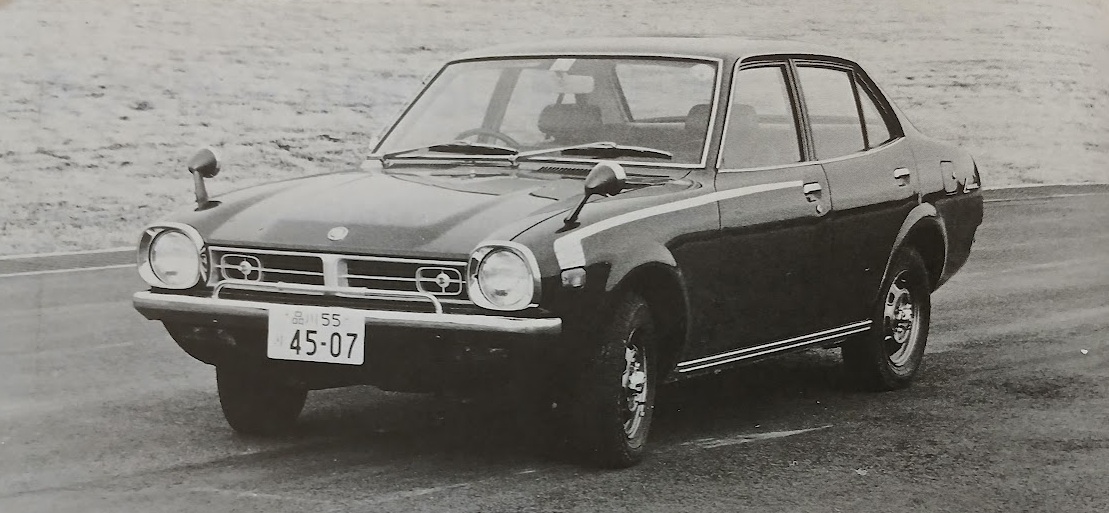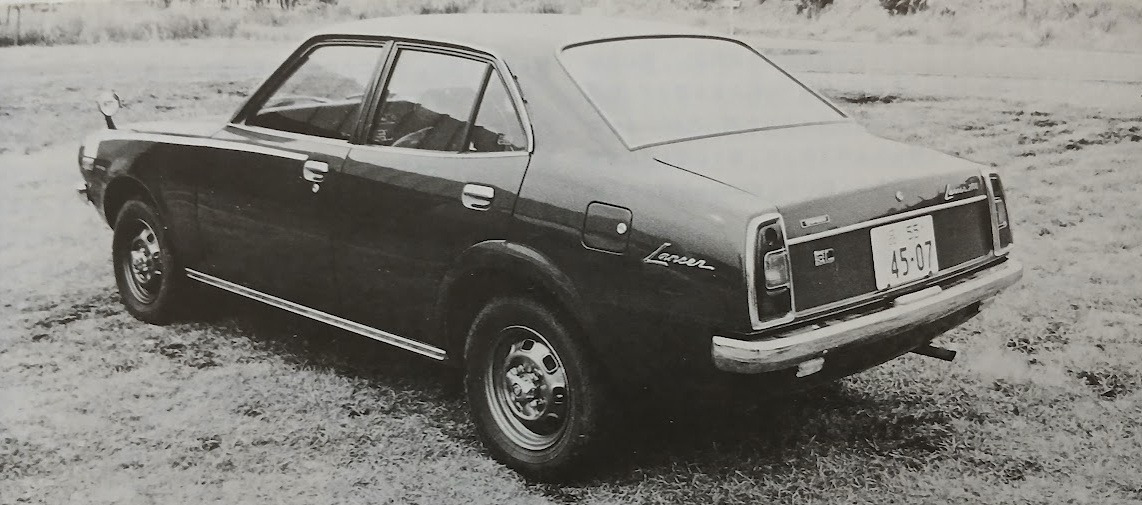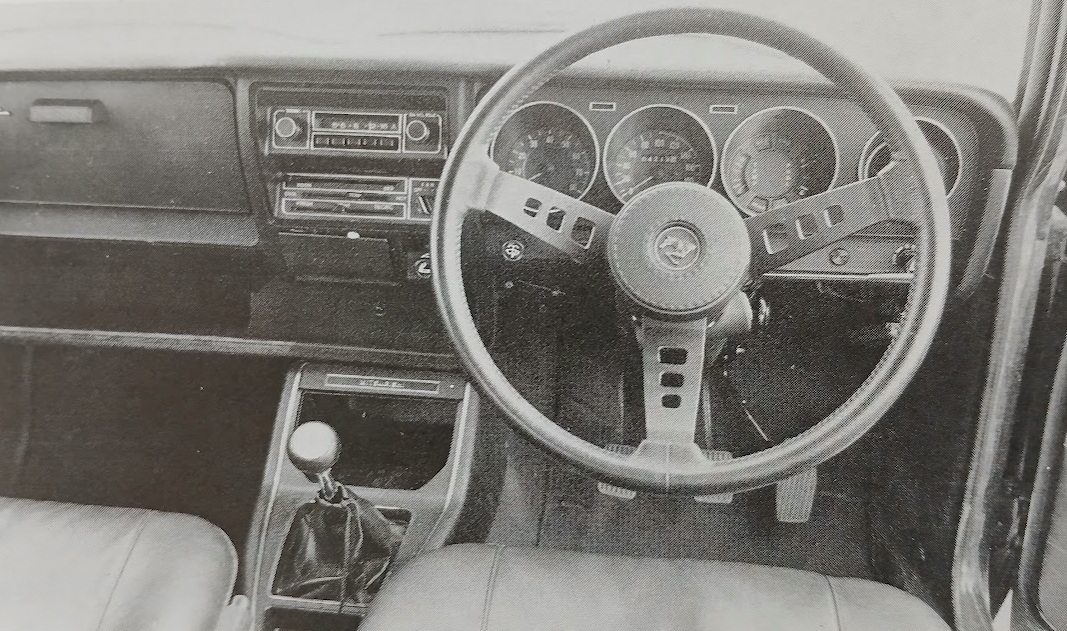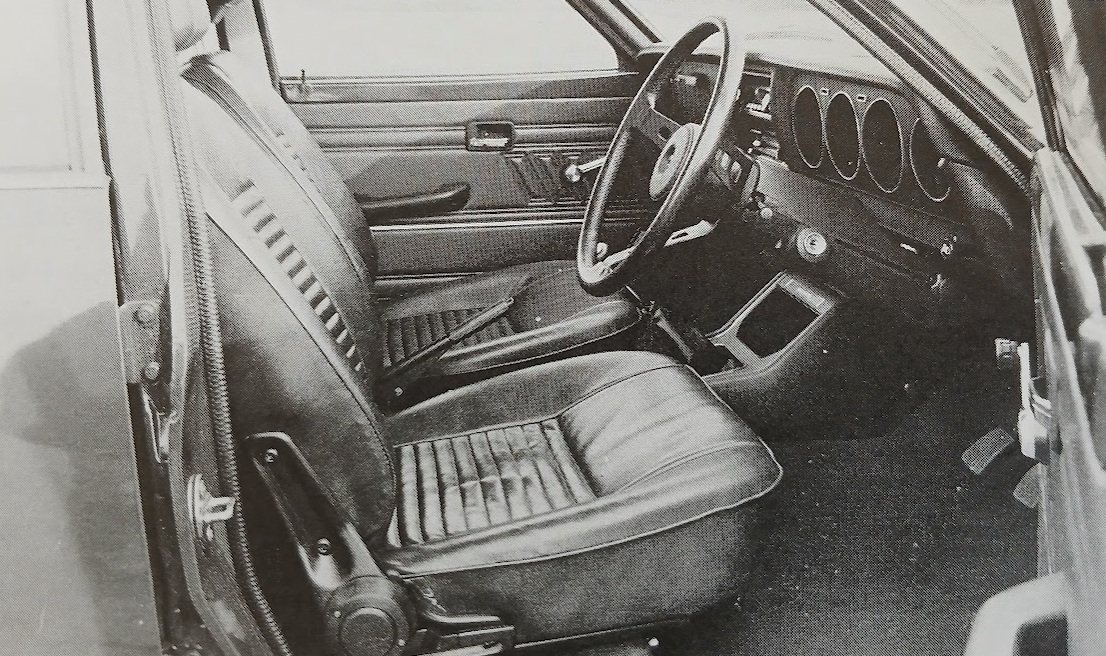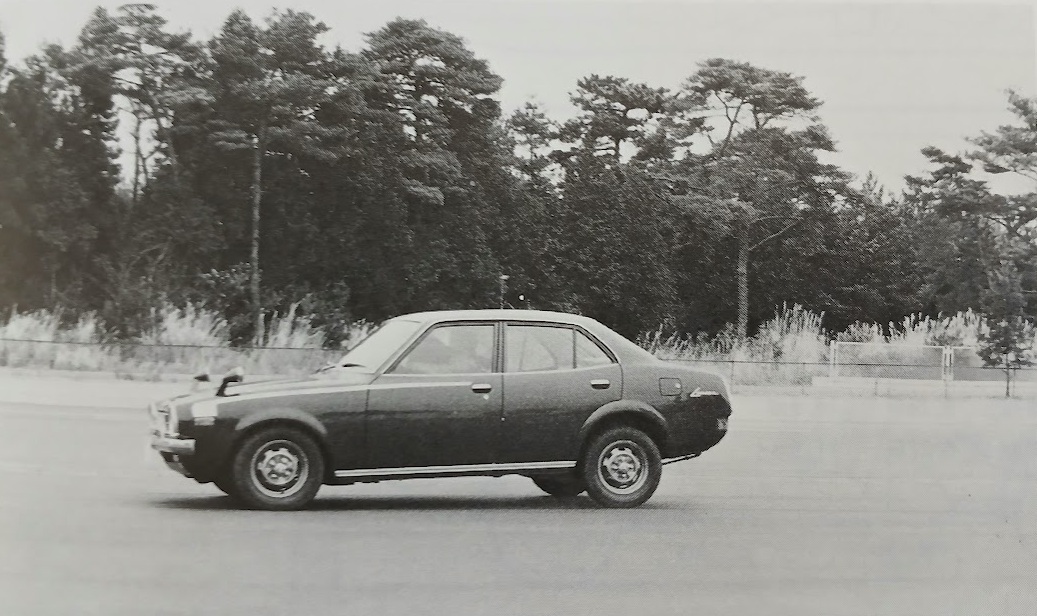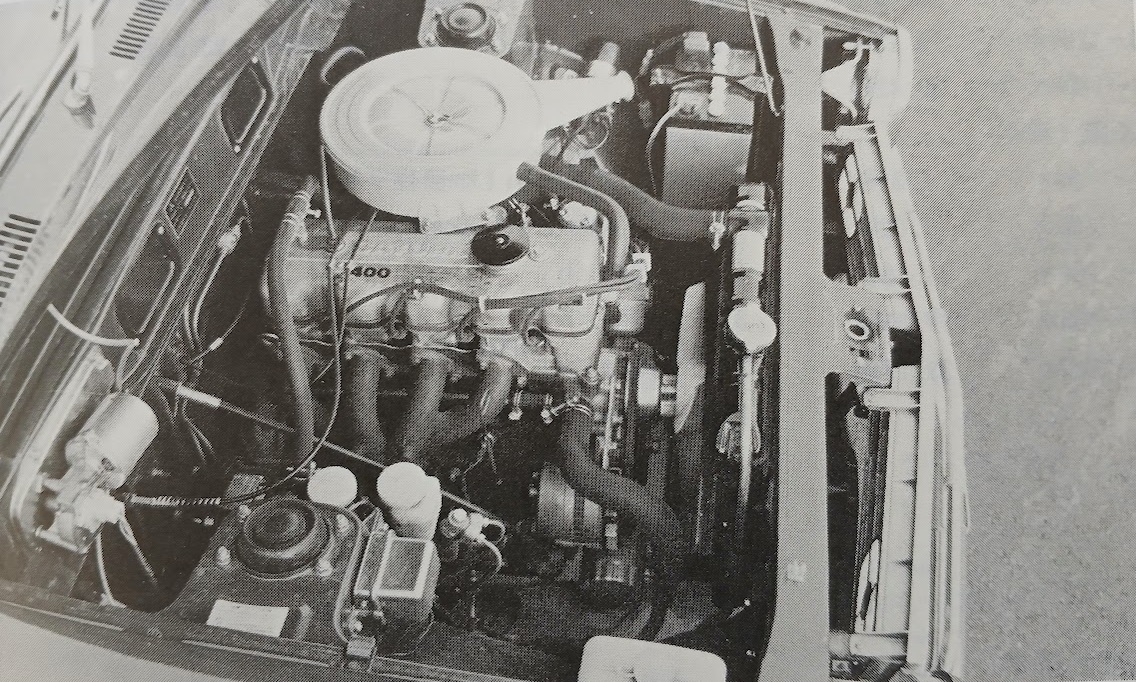Mitsubishi Lancer 1400SL-5 (1973)
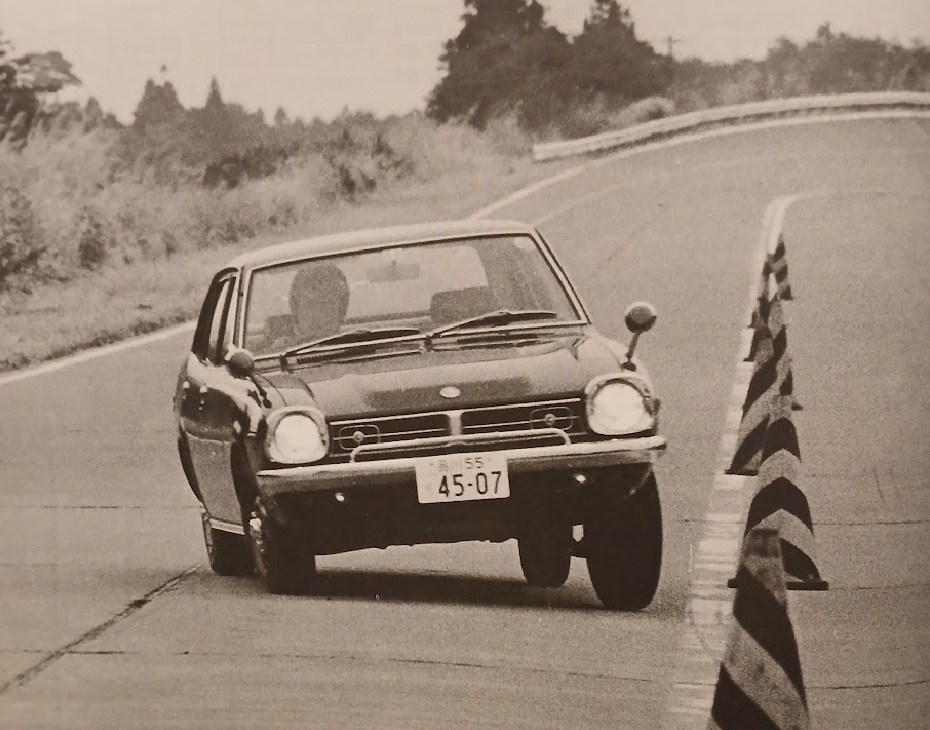
Publication: Car Graphic
Format: Road Test
Date: April 1973
Author: “C/G Test Group” (uncredited)
Summary: Mitsubishi’s new mass-market car, with conventional mechanisms mainly borrowed from the Galant. The engine is generally smooth and flexible, but a bit noisy at high speeds. Excellent 5-speed gearbox. The handling is on par with that of an average Japanese passenger car, and its overall balance makes it suitable for everyone.
Road testing the Mitsubishi Lancer 1400SL-5
It has been three years since the Colt 1200 and 11F disappeared, and Mitsubishi, which had been fighting for sales in a niche corner of the market with the coupe-bodied Galant FTO, has finally introduced a passenger car aimed at the so-called “mass-market” segment: the Lancer series, announced on January 19th.
Originally, Mitsubishi’s comeback to this segment was supposed to be a small sedan version based on the FTO, and the FTO coupe was released first as a spearhead of that image. But in this country, which sometimes seems to be dominated by a kind of hysteria, the styling, which lacked flashiness, did not receive wide support, and sales were not good enough to justify a passenger car version being released afterwards. So, the Lancer was created with a renewed focus, and with dimensions a little bigger than its formidable rivals, the Toyota Corolla and Datsun Sunny.
This new series features a long-hood, short-deck, conventional body style that is in line with the mainstream of American sub-compact cars, and is based on shared mechanical components that have been accumulated since the Galant was released. It consists of a total of 12 models based on three types of engine, a 1.2-liter with 70ps, 1.4-liter with 92ps, and 1.6-liter with 100ps, and two types of sedan body, a two-door and a four-door. Of these, we tested a sporty version called the 1400SL-5. Although its image is sporty, the engine tune is the same as others in the 1400 series, with a 1439cc, regular-gasoline four-cylinder with a maximum output of 92ps/6300rpm (the same as the Galant 14L), but it is equipped with a 5-speed gearbox, and the exterior and interior, including the gauges, are dressed up appearance-wise. While the high-performance 1600 (which comes in only one model called the GSL, also with a 5-speed gearbox) is only available as a two-door, the 1400SL offers both two- and four-door configurations, giving it the advantage of being a practical car. The one we tested was the four-door version, priced at 647,000 yen in Tokyo (622,000 yen for the two-door).
The Lancer 1400SL-5, which we drove approximately 400km, including a high-speed testing session at Yatabe, has inherited all the good qualities of Mitsubishi’s practical cars since the release of the Galant in 1970, and is a very easy-to-handle and enjoyable family sports car, with a neat combination of ordinary mechanisms.
The first good impression you get when you sit down is the appropriate driving position. The seats are simply upholstered in vinyl, but the dimensions, shape, and distribution of firmness and softness in the cushion have been well considered, and when you sit on them in a comfortable position, the relative positions of the steering wheel, shift lever, pedals, and handbrake are excellent. The seating position is not too low compared to the scuttle, so not only is there a wide field of vision, but there is also little psychological sense of being closed in. In addition, the steering wheel position can be easily adjusted up and down by 35mm (infinitely variable), a worthwhile tradition that has been passed down from the Galant. The relative placement of the three pedals is also clever, with the suspended throttle pedal in an excellent position for easy heel-and-toeing. However, the gap between the clutch pedal and the floor tunnel is a little narrow, so when we lifted our left foot off the floor to release the clutch, we were prone to catching our shoes on the edge of the pedal.
Once you start driving, the Lancer is just like a Galant. The 4G33 power unit, which has a long stroke of 86mm compared to the bore of 73mm, is by no means quiet, and the metallic chattering sound is particularly harsh from around 4000rpm, but it doesn’t feel burdened thanks to its outstanding smoothness and flexibility. In fact, this engine is surprisingly tenacious even at low speeds (even in fifth gear, smooth acceleration is possible from 1300rpm, or 35km/h). On the other hand, it revs up without any stress all the way to the rev counter’s limit of 6000rpm, which is 300rpm below the power peak. When pushed to this limit, the maximum speeds in each gear are 45km/h in first, 75km/h in second, 112km/h in third, and 150km/h in fourth. The fact that even the direct fourth gear can easily pull these engine speeds is probably due to the low gearing (3.328 / 1.955 / 1.341 / 1.000 / 0.854, with a final drive of 4.22) which is exactly the same as the Galant 14L SL-5. The flexibility of using first gear almost exclusively for starting off, and using second gear or higher once on the move, even including fifth gear regularly in town, is also due to this gearing. Between 40km/h and 100km/h, third, fourth, and fifth gears are all within the range, so that you can drive freely in any of those gears depending on your needs and mood. It’s so good that you even start to question whether the 5-speed gearbox is necessary.
100km/h cruising corresponds to 3950rpm in fourth gear and 3300rpm in fifth gear. On the other hand, if you really step on it, the engine will run very happily up to about 6500rpm, but apart from the fact that the noise increases terribly, the effective torque drops off sharply after 6000rpm, so it doesn’t mean much in terms of performance. For example, when looking at the overtaking acceleration times in third gear, it shows favorable torque characteristics in the low and mid engine speed range, with 20-60km/h in 7.3 seconds, 40-80km/h in the same 7.3 seconds, and 60-100km/h in 7.1 seconds, but when you force third gear up to 6500rpm to accelerate from 80-120km/h, response becomes extremely poor, as shown by the time of 11.3 seconds. The top speed was measured at 156.2km/h in a flying kilometer in no-wind conditions. The car’s fairly accurate speedometer indicated 160km/h at this speed, which was not quite the manufacturer’s claimed figure of 170km/h, but for a practical 1.4-liter car, it was still a satisfactory result.
To provide context, if we compare its power performance with the Galant 14 SL-5 that we previously tested at C/G, the Lancer’s top speed compares favorably to the Galant (which reached 153.2km/h), as does its 0-400m time of 17.3 seconds (18.2 for the Galant), and its 0-1000m time of 33.2 second (34.9 for the Galant). The vehicle weight is 830kg for the Lancer and 900kg for the Galant, and the Galant’s frontal projection area is also slightly larger. The powertrain remains unchanged, so the smaller and lighter car is naturally faster.
While measuring the power performance, what made the strongest impression, especially during the rigorous standing-start acceleration tests, was the excellence of the gearbox. Besides the well chosen ratios, the shifts are light and sure, and the stroke of the lever is appropriately short, allowing it to be handled with complete ease. The back-and-forth movement between fourth and fifth gears, which is a concern when placing fifth to the upper right of a normal H-type pattern, is not at all nerve-wracking, and the synchro is powerful, so in the end, we never heard a single clashing noise from the gears.
Next, regarding handling, we honestly didn’t have high expectations for the capabilities of the Lancer’s chassis until we actually drove it. It’s true that the Lancer’s big brother, the Galant, is an outstanding handling model for a domestic passenger car with a mediocre suspension layout, but when we thought about the fact that the track was narrowed by 10mm at the front, and 30mm at the rear, not to mention the wheelbase that was shortened by 80mm, we couldn’t help but be pessimistic. However, when we actually drove it, our worries were completely blown away. This car, like the Galant, has textbook-level handling, and in terms of the refinement of the details, it may even surpass the Galant.
First of all, the steering response is very good. It’s not a direct feeling like a rack and pinion, but the front wheels respond to the movement of the driver’s hands without any hesitation. There is very little free play in a straight line, and it is moderately quick and light. In the pylon slalom, the chassis always showed a very slight, but pleasant understeering tendency. There was a fair amount of roll, but nothing unsettling. The final breakaway point was indicated by the rear wheels starting to slide out. The breakaway came very gradually unless you provoked a sudden change in traction, such as applying full power in second gear in a tight corner. It’s also very easy to correct this with decisive steering inputs. So even in the slalom, you can do most of the driving just by steering, without making the line too wide, and if necessary, you can gently slide the tail with the throttle, and weave lightly through the pylons. However, perhaps because the rear tread is significantly narrower than that of the Galant, when the roll angle becomes large, the inside rear wheel tends to lift up, spin, and lose power in an instant. In any case, the handling is basically safe and it is also fun to drive.
The contribution of the tires cannot be overlooked. The test car was fitted with the optional radial tires, Yokohama GT Special Steel 155SR-13s, which matched well with the chassis and brought out the full potential of the Lancer. Even with the high-speed air pressure specified by the manufacturer (1.7kg/cm²), there was almost none of the harshness that is common with steel cords, and the presence of radial tires was only slightly felt when driving over sharp-edged protrusions such as cat’s eyes. Considering the good steering response mentioned earlier, this is probably due to the accurate setting of the amount and direction of compliance in the suspension bushings. The tires themselves do not make the high-pitched “whine” characteristic of radials at high speeds, and even under harsh conditions like the slalom, there was very little squeal, even with the thin 155mm width. We didn’t have a chance to try it out on wet roads, but on dry roads, at least, the adhesion was amazing, and even during hard racing starts, the wheels did not spin at all, and the engine speed dropped the moment the clutch was engaged. In C/G’s experience, the Galant AI and 14L, which have basically the same suspension and a very similar power-to-weight ratio, spun the wheels violently when starting from rest, and at the same time, the rear axle was thrown out of control, even with the standard 6.15-13-4PR tires, so this is purely a difference in tires.
Still, I would like to see the wheel rim width widened by another half inch. Looking at the photos from the slalom, the outer tire maintained a firm grip, but was deforming quite significantly, and showed signs of imminent breakaway. Even if you keep the 155-width tires, just changing to 4.5J x 13 rims should make the suspension more stable.
The brakes are discs with servo in the front, leading/trailing drums in the rear. These brakes are quite reliable. Even in the rigorous fade resistance test called “0-100-0,” the initial pedal pressure of 15kg dropped to 14kg after the third stop (disc brakes have stronger stopping power when warmed up), then gradually increased and finally leveled off at 25kg, showing good results. This probably means that highly fade-resistant pads are used, but even in the braking force test from an initial speed of 50km/h, the stopping power was very strong, and the pedal response was very natural.
We’ve already mentioned the excellent driving position, but the interior is generally unified in a simple and pleasing way. In addition to the glovebox on the left side of the dashboard, there is a large tray below it (it can even hold a large-format atlas), and a recess on the console that can fit a 35mm camera. Even with the front seats moved back, the rear bench seat can seat two adults comfortably (although knee clearance is at the very limit behind the front backrests). One problem is that, perhaps because the entire cabin had to be set back to accommodate the long-nose styling, the rear doors are pushed back over the wheel arches, even though it is a four-door car. This means that the wheel housings jut out on both sides of the rear seat like the arms of a bench, making it difficult to get in and out.
In terms of minor details, we were also not satisfied with the layout of the switches on the dashboard. In particular, the Lancer’s wiper and screen jet switches, which in the Galant series are operated (along with the headlight dimmer, flasher, and turn signals) by a single lever on the right of the steering column, have been changed to a push-pull knob in a hard-to-reach position on the lower left of the dash. Similarly, the light switch on the bottom right of the dash is not the easy-to-use (if a little far away) tumbler type of the Galant, but another push-pull knob with soft detents. The dashboard and seats themselves are quite luxurious, but considering that the price difference between this car and the Galant 14L SL-5 is only 50,000 yen, it is a big mistake to economize on such important control parts.
For a lightweight design, the body is well-constructed, with effective soundproofing. The four doors fit well, and even when we drove over rough, sandy roads at 80km/h, the body did not creak at all (although there was occasional scuttle noise on hard, uneven surfaces like railroad tracks), and the sound of bouncing pebbles hitting the floor did not resonate loudly. The ride was always solid, and wind noise at high speeds was very low, but the exhaust noise tended to resonate inside the cabin once the revs exceeded 4000rpm.
The cabin ventilation is powerful, and the eyeball outlets on both ends of the dash always bring in plenty of fresh air as long as the car is moving. The heater is also powerful, but unfortunately the boost from the wind when the car is moving can cause the heating effect to change drastically, so it is difficult to modulate.
Average fuel economy over the total test distance of 396km, including repeated top speed tests and standing-start acceleration tests at Yatabe, was 7.63km/l. When leading the traffic flow on an empty national highway, the average was around 8km/l. In congested city areas, the average was around 6.5-7km/l. Overall, these are uneconomical results for a 1.4-liter practical vehicle, but this may be because we were too pleased with the excellent gearbox and made too many unnecessary gearchanges. Once you get used to it, as you can imagine from the results of the constant-speed test (13.9km/l at a steady 100km/h in fifth gear), you should be able to drive much more economically by making frequent use of the tenacious fifth gear even in city areas. Even so, if the final drive ratio was lowered a little more, fuel efficiency at low speeds would be improved, and fifth gear could be used as a true cruising gear for the highway.
People have different tastes when it comes to body styling and interior design, and the Lancer is fairly average in both respects. It’s not particularly roomy or quiet, but it has the capacity to transport four adults safely and comfortably for long periods of time at high speeds, and above all, it is exceptionally easy to drive, as exemplified by its smooth and highly maneuverable handling. Anyone can simply get in and drive without worries, like a a car they’ve been familiar with for a long time, and it can also be enjoyed by those who drive in a sporty manner. It can be said that it is suitable for everyone because it can accommodate various driving styles depending on the driver’s need and mood. Therefore, the four-door version is probably best from the viewpoint of practicality. If it can produce results like the ones in this test, there is no need to go for the 1600 with its additional 8ps. In that sense, the Lancer 1400SL-5 is a safe, high-value purchase. Due to the favorable characteristics of the engine, the 5-speed gearbox is practically unnecessary, so even the 1400GL (609,000 yen, 586,000 yen for the two-door) is worthy of consideration.
Postscript: Story Photos
